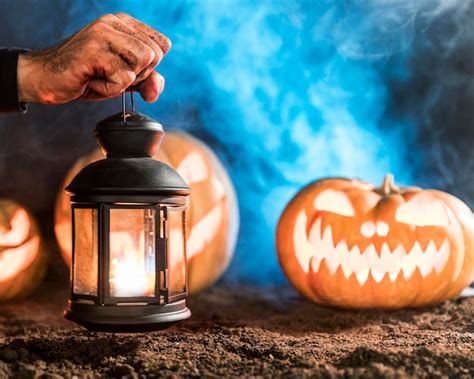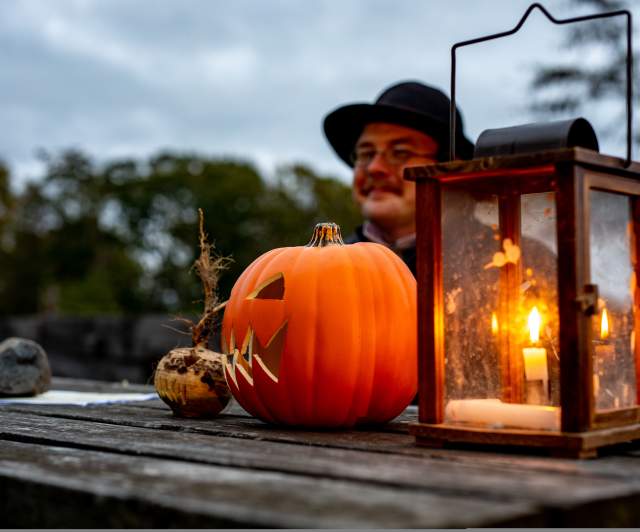The Water Lantern Festival is a captivating event that transcends cultural boundaries, uniting communities through the serene beauty of illuminated lanterns floating on water. This festival, rooted in rich historical traditions, symbolizes hope, remembrance, and the sharing of dreams. As it has evolved over time, various geographical regions have infused their unique customs, enhancing its significance and local flavor. From the meticulous preparations of crafting lanterns to the ceremonial practices that accompany the event, each aspect contributes to a vibrant tapestry of cultural heritage. Join us as we explore the historical origins, symbolism, and diverse traditions of the Water Lantern Festival, celebrating its enduring impact on communities worldwide.
ritarblog.com invites you to explore this topic thoroughly.
1. Historical Origins and Evolution
The Water Lantern Festival, steeped in centuries of history, draws its origins from ancient traditions across diverse cultures. One of the earliest forms of water lantern lighting can be found in China, where it was believed that illuminating lanterns on rivers would guide the spirits of ancestors back home during the Lantern Festival. This practice served as a tangible symbol of the bond between the living and the deceased, fostering a sense of continuity and remembrance.
The festival’s journey across Asia saw it take on distinct features shaped by local customs. In Japan, for example, the Toro Nagashi festival incorporates floating paper lanterns on rivers as a way to honor the deceased during Obon, a Buddhist observance. Likewise, in Thailand, the Loi Krathong festival pays homage to the beauty of water and expresses gratitude to the river goddess.
The Water Lantern Festival, once rooted in tradition, has blossomed into a worldwide phenomenon. Contemporary celebrations seamlessly blend traditional elements with modern themes, captivating a diverse audience seeking a truly enchanting experience. Communities across the globe now embrace the festival as more than just a cultural tribute. It serves as a powerful reminder of unity, hope, and our shared human experience. The festival continues to evolve, yet its profound significance remains steadfast.

2. Symbolism and Cultural Significance
The Water Lantern Festival, imbued with deep symbolism and cultural significance, is a celebration of hope, remembrance, and the interconnectedness of life. Its core belief centers on the act of releasing a lighted lantern onto the water, a ritual that honors ancestors and allows individuals to share their dreams with the cosmos. Each lantern, often personalized with heartfelt wishes or messages, serves as a beacon of light, representing the enduring presence of those who have passed on.
In many cultures, releasing lanterns into the water symbolizes letting go of burdens and negative emotions. This act of release promotes healing and renewal, inviting participants to contemplate their lives and aspirations. Moreover, these festivals foster a sense of community, as people come together to celebrate their shared heritage and create new memories.
The Water Lantern Festival, infused with the element of water, symbolizes purity, tranquility, and the continuous flow of life. As lanterns glide gracefully across the water’s surface, they create a captivating spectacle that mesmerizes both participants and observers. Transcending cultural barriers, the festival serves as a poignant reminder of our shared human experience, uniting us in hope and remembrance across generations.

3. Geographical Variations and Local Traditions
The Water Lantern Festival, celebrated in diverse forms across the world, finds its unique expression in various cultures, each with its own traditions and adaptations. In Japan, the Toro Nagashi festival, held during the Obon season, is a moving tribute to ancestors. Families send paper lanterns adrift on rivers, guiding the spirits of their loved ones. The soft light of these lanterns against the evening sky evokes a serene and contemplative ambiance, symbolizing remembrance and the enduring cycle of life.
In Thailand, the Loi Krathong festival celebrates the significance of water lanterns. Participants meticulously construct beautiful floating baskets, embellishing them with flowers, incense, and candles. These lanterns are then ceremoniously released onto rivers and lakes. This tradition symbolizes an expression of gratitude to the water goddess and serves as a symbolic act of releasing misfortune.
Vietnam’s Lantern Festival, known as Tet Trung Thu, unfolds during the harvest moon. This joyous occasion sees vibrant lanterns of every imaginable shape and size illuminating the streets, marking the culmination of the harvest season and fostering a spirit of community unity.
The Water Lantern Festival’s diverse geographical expressions underscore its adaptability while also showcasing the universal themes of connection, remembrance, and nature appreciation. These shared values transcend cultural boundaries, making this festival a truly global celebration.

4. Preparations and Planning: Crafting the Lanterns
Preparation for the Water Lantern Festival commences long before the event itself, as communities immerse themselves in the elaborate creation of lanterns. These lanterns, crafted with meticulous care, serve as vessels for personal wishes and cultural expressions. Traditionally, they are constructed from lightweight materials such as paper, bamboo, or leaves, enabling them to float gracefully on water. Participants frequently congregate in workshops or community centers, where they can acquire the skill of lantern-making through guided instruction.
Crafting lanterns often starts with choosing lively colors, intricate designs, and personal messages that capture individual aspirations or cherished memories. Many adorn their lanterns with significant symbols or words, making each one a singular reflection of their desires. This hands-on activity cultivates creativity and provides a way for people to engage with the festival’s profound significance.
Beyond crafting, community members play a vital role in organizing the festival’s logistics. This includes securing a picturesque location on a river or lake, implementing safety measures, and coordinating with local authorities. This collaborative effort not only strengthens community bonds but also amplifies the festival’s collective spirit, transforming the lantern-making process into a meaningful prelude to the enchanting night of illumination.
5. Key Rituals and Ceremonial Practices
The Water Lantern Festival’s cultural significance hinges on its key rituals and ceremonial practices, creating an enthralling experience for both participants and onlookers. The festival traditionally commences with a communal gathering, where participants share stories about their lanterns, reflecting on personal memories, hopes, and the loved ones they wish to honor. This storytelling element cultivates a profound sense of connection amongst those present.
As dusk settles, the ambiance shifts, bathed in the warm glow of lanterns and the soothing strains of music. A central ceremony involves the lighting of these lanterns, often accompanied by heartfelt prayers or blessings. Participants are encouraged to articulate their intentions or wishes, imbuing their lanterns with personal significance.
As the lanterns ignite, a ceremonial procession carries them onto the water. This moment is both visually captivating and emotionally moving, as the floating lights create a mesmerizing display against the darkening sky. Participants often observe in quiet reflection, their wishes accompanying the lanterns as they drift away, symbolizing the release of burdens and the connection to their ancestors.
The culmination of these rituals fosters a sense of unity and shared hope, reinforcing the festival’s central themes of remembrance, healing, and the interconnectedness of life.
6. Community Involvement and Participation
The Water Lantern Festival thrives on community involvement, making it a genuinely communal experience that fosters connection and collaboration. The festival often begins with extensive outreach efforts to engage local residents, schools, and organizations. Well before the event, workshops and educational programs are organized, inviting participants of all ages to learn the art of lantern-making. This inclusive approach ensures that everyone can contribute, regardless of skill level, strengthening community ties.
Festival day brims with excitement as families and friends gather to celebrate. Community members contribute in diverse ways, from leading lantern-making workshops to managing the event’s logistics, including venue setup and safety protocols.
The vibrant atmosphere is often enriched by the participation of local musicians, artists, and performers, who contribute live music and entertainment that enhance the overall experience. Adding to the festive mood, food vendors may also join the festivities, offering traditional dishes that reflect the local culture.
The release of lanterns by participants creates a shared atmosphere of joy and contemplation, embodying unity and common goals. This community-focused approach not only enhances the festival but also strengthens its lasting importance as a celebration of hope, remembrance, and shared experiences.
7. Notable Water Lantern Festivals Around the World
Water Lantern Festivals, celebrated globally, each provide distinctive cultural experiences and highlight local customs. One of the most celebrated is the Toro Nagashi in Japan, held during the Obon festival. Families release lanterns onto rivers to pay tribute to their ancestors. This creates a captivating spectacle as countless lights glide downriver, illuminating the night and symbolizing the ancestral spirits’ return to their eternal rest.
Thailand’s Loi Krathong festival draws thousands of visitors annually. Participants craft intricate floating baskets, embellished with flowers, candles, and incense. These offerings are a gesture of gratitude to the water goddess and a plea for forgiveness for past misdeeds. The festival, celebrated on the full moon night of the twelfth lunar month, transforms rivers and lakes into dazzling displays of light.
The Pingxi Sky Lantern Festival in Taiwan is another spectacular event, where thousands of sky lanterns are released into the night sky. While not a water lantern festival in the traditional sense, it embodies similar themes of hope and renewal as participants write their wishes on lanterns before sending them aloft.
In the United States, various cities host their own versions of the Water Lantern Festival, where communities gather to celebrate with music, food, and the collective release of lanterns, fostering a spirit of unity and remembrance. These festivals highlight the global appeal of water lantern traditions while celebrating the unique cultural identities of each community.
8. Impact on Tourism and Local Economies
The Water Lantern Festival is a major tourist attraction, bringing in visitors from all over who are drawn to its magical ambiance. This influx of visitors has a positive impact on local economies, as communities prepare for the event. Local businesses experience increased foot traffic and sales, with hotels, restaurants, and shops seeing a surge in customers seeking accommodations, meals, and souvenirs. This contributes to a significant economic boost for the area.
Furthermore, festivals generate significant media coverage, effectively promoting the distinctive cultural heritage of their host locations. This exposure fosters ongoing interest, encouraging repeat visits and cementing the area’s reputation as a prime destination for cultural tourism. Local artisans and vendors are also provided with a platform to showcase their craftsmanship, thereby enhancing community engagement and promoting traditional skills.
The festival acts as a bridge for cultural exchange, connecting residents and visitors alike. Tourists, by partaking in the Water Lantern Festival, learn about local traditions and values. Meanwhile, communities have the opportunity to share their heritage and stories. This shared appreciation enhances the experience for all participants and highlights the festival’s ability to not only celebrate culture but also stimulate economic growth and community development.
9. Personal Stories and Testimonials
The Water Lantern Festival evokes profound emotional connections, as evidenced by the personal stories and testimonials of its participants. Many attendees find solace and closure in releasing lanterns as a tribute to loved ones who have passed away. One participant described how lighting a lantern for their grandmother brought back cherished memories, turning the festival into a moving and meaningful commemoration.
The festival also fosters a strong sense of community and shared experience. Families bond over the creation of lanterns, often passing down traditional techniques from one generation to the next. Children, filled with excitement, enthusiastically participate in lantern making, learning the meaning behind each ritual.
The Water Lantern Festival is a cherished event, bringing people together in a powerful display of hope and renewal. Participants find solace in releasing their lanterns, symbolically letting go of past burdens. As the lanterns drift away, illuminating the night sky, a sense of unity and connection washes over the crowd, creating a truly unforgettable experience.
10. Future Trends and Contemporary Adaptations
The Water Lantern Festival, a celebration steeped in tradition, adapts to the modern age while preserving its cultural essence. A prime example of this evolution is the integration of technology into the festival experience. Event organizers are increasingly utilizing social media platforms to promote the festival, encouraging participants to share their lantern stories and photographs online. This digital engagement not only broadens the festival’s reach but also cultivates a global community, as individuals from diverse locations connect through shared experiences.
Moreover, eco-friendly practices are becoming increasingly important. Many festivals are adopting sustainable materials for lantern-making, such as biodegradable options, to minimize environmental impact. This shift aligns with a growing awareness of environmental issues and the desire to celebrate traditions responsibly.
Additionally, contemporary adaptations often feature diverse cultural performances, workshops, and art installations, enriching the festival experience and appealing to a broader audience. These innovations create a vibrant atmosphere that attracts younger generations while preserving traditional elements.
The Water Lantern Festival flourishes as a vibrant celebration of hope, remembrance, and community. It seamlessly adapts to the evolving times while steadfastly honoring the rich heritage that birthed its tradition.
The Water Lantern Festival is a beautiful celebration that transcends cultural boundaries, embodying themes of hope, remembrance, and community. Through its rich historical origins, vibrant rituals, and evolving practices, the festival continues to bring people together, fostering connections across generations. As it adapts to contemporary trends and embraces sustainability, the festival remains relevant and impactful, contributing to local economies and tourism. Ultimately, the Water Lantern Festival serves as a poignant reminder of our shared human experience and the enduring power of light in the darkness.
ritarblog.com

